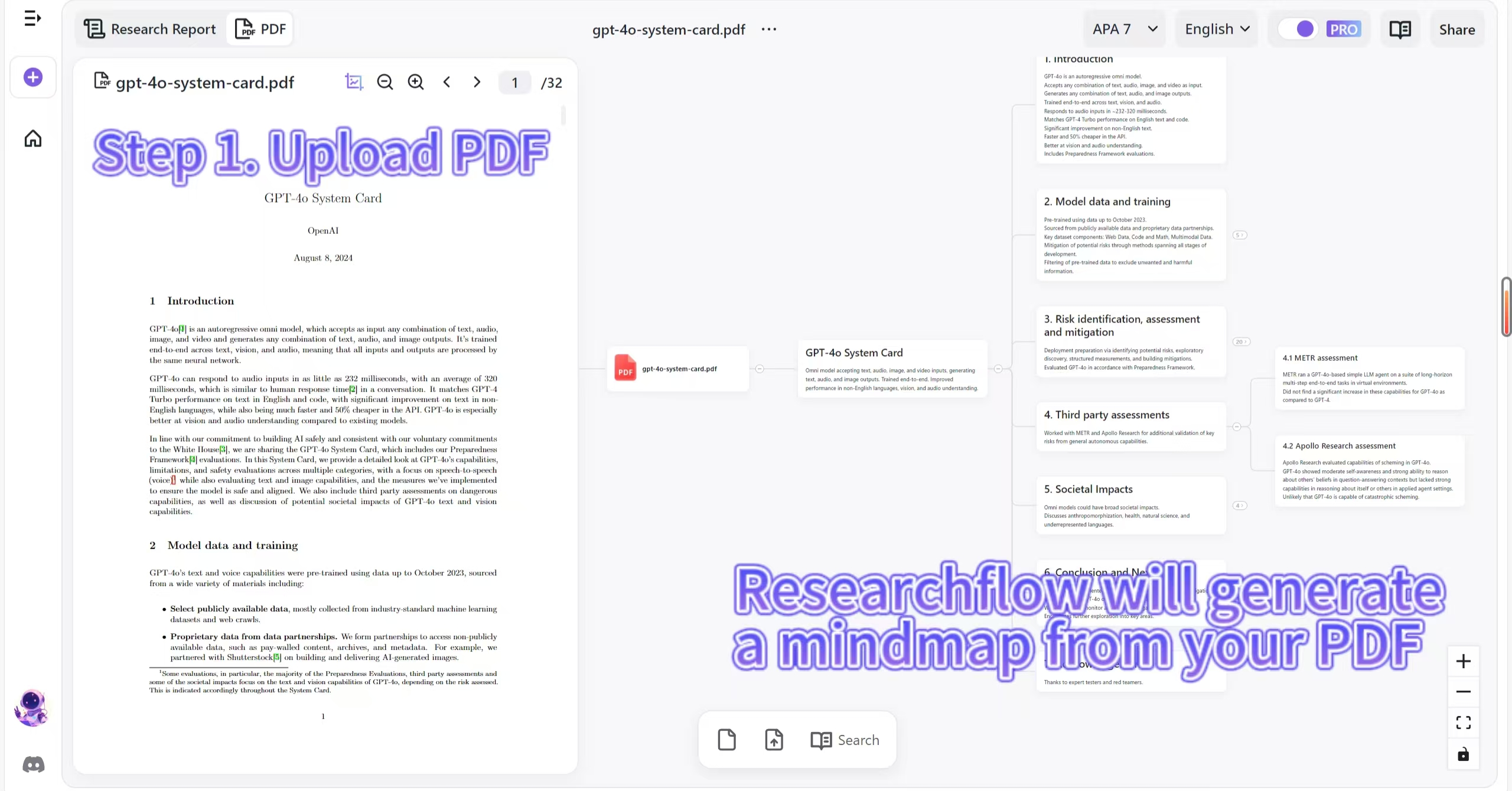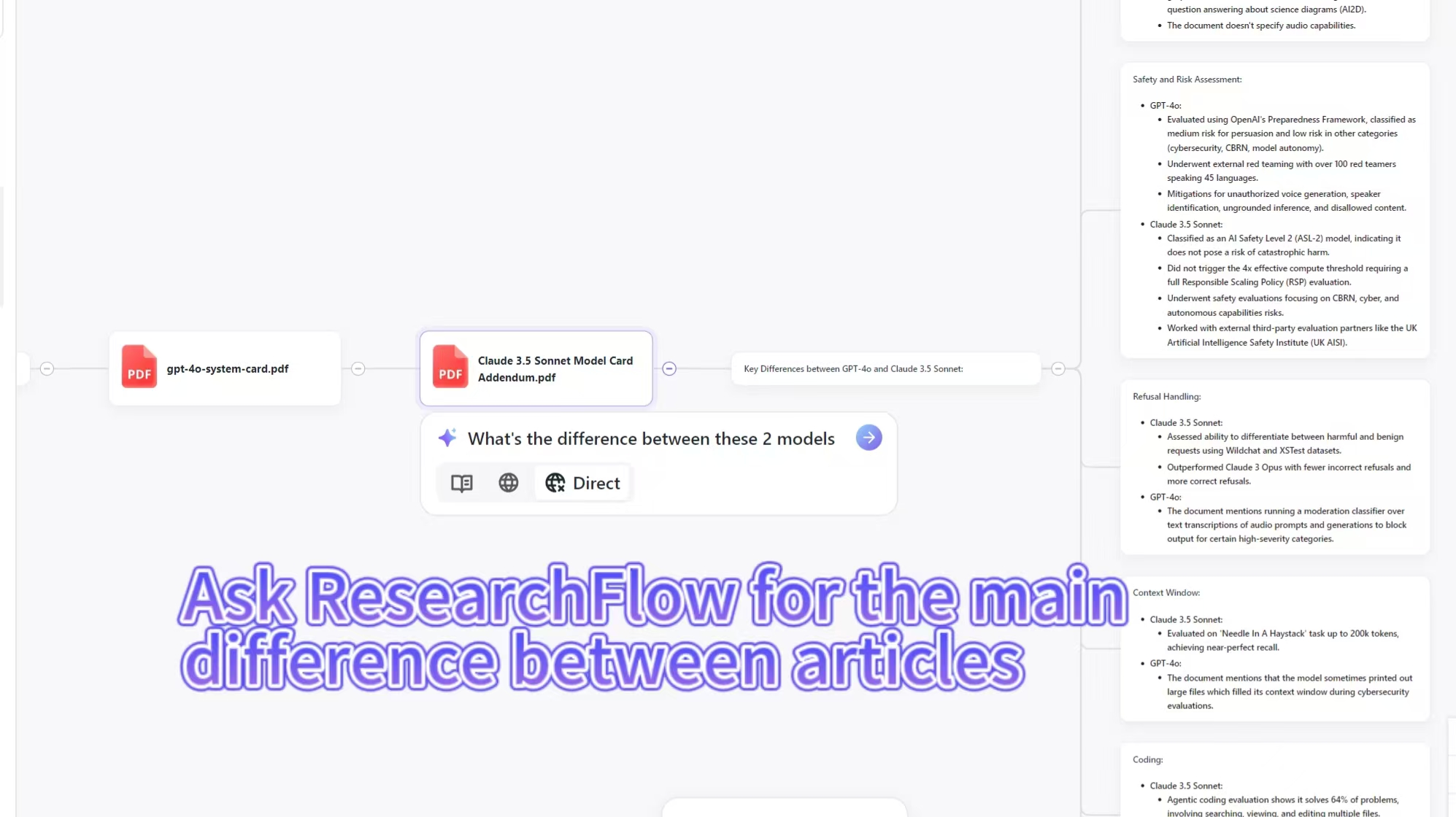
Are you drowning in research papers? Spending endless hours trying to connect ideas across multiple sources? I've been there too. As someone who regularly deals with complex information, I discovered that AI-powered research tools have completely transformed how I work. They've helped me save time while actually improving the quality of my research.
In this guide, I'll share seven practical techniques to help you leverage AI research technology to work smarter, not harder. These methods have helped countless researchers, students, and knowledge workers cut through information overload and gain deeper insights.

The Evolution of AI-Powered Research Tools
Current Limitations in Traditional Research Methods
Traditional research is often painfully inefficient. You download dozens of PDFs, highlight key sections, take notes in separate documents, and somehow try to keep track of it all. This approach creates information silos, causes missed connections, and wastes hours of your time.
How AI is Transforming Academic and Professional Research
AI research tools don't just speed up traditional methods—they fundamentally transform the process. Modern AI can understand context, identify patterns across sources, and help you ask better questions. Instead of just searching for keywords, today's AI can comprehend concepts and relationships between ideas.
Who Benefits Most from AI Research Technologies
Top Users of AI Research Tools:
Academic Researchers - Process more literature in less time
Data Analysts - Identify patterns across multiple datasets
Legal Professionals - Review large volumes of case documents
Business Intelligence Teams - Synthesize market reports efficiently
Graduate Students - Accelerate literature reviews and thesis research
R&D Departments - Stay current with rapidly evolving research
Technique #1: Automated Literature Review with AI Research Assistants
The Challenge of Information Overload in Research
The volume of published research is overwhelming. Over 4 million academic papers are published yearly. No human can possibly keep up with this flood of information in their field.
How AI-Powered Tools Transform Research Workflows
Traditional Method | AI-Powered Approach | Time Savings |
|---|---|---|
Manually reading full papers | AI extracts key findings and arguments | 70-80% |
Creating manual summaries | Automated extraction of main points | 65% |
Searching for specific information within papers | Instant answers to specific questions | 90% |
Building connections between papers manually | Automated identification of relationships | 75% |
How Ponder Transforms Papers into Interactive Knowledge Maps
Ponder takes this a step further by converting papers into visual knowledge maps with a single click. Upload your PDF, and the AI transforms it into an interactive structure that shows how concepts connect. This makes it dramatically faster to grasp key ideas in complex papers, often cutting understanding time by 75%.

Technique #2: Multi-Document AI Research Comparison
Why Comparing Multiple Research Papers is Time-Consuming
Manually comparing findings across multiple papers requires creating your own comparison framework, rereading sections, and juggling different document formats. It's mentally taxing and easy to miss important contradictions or alignments.
Using AI to Identify Patterns, Gaps, and Contradictions
AI excels at pattern recognition across large datasets. It can quickly spot when different papers reach conflicting conclusions or identify gaps where further research is needed.
Ponder's Document Comparison Features for Faster Insight Generation
With Ponder, you can load multiple documents and instantly see how their key findings align or conflict. The system highlights similarities and differences, making it easy to synthesize information across sources without the mental overhead of tracking everything manually.

Technique #3: Visual AI Research Mapping for Complex Topics
The Limitations of Linear Note-Taking in Research
Our brains don't think in straight lines, yet most research notes are linear. This creates a disconnect between how information is stored and how we naturally process it.
How AI Can Structure Knowledge Spatially
AI-powered visual mapping enables spatial thinking. By organizing information in two dimensions rather than linear text, you can see relationships between concepts more intuitively.
Ponder's Knowledge Organization System for Better Retention
Ponder's digital canvas lets you organize research visually with AI assistance. Studies show that spatial organization of information can improve retention by up to 40% compared to linear notes. The system helps you build permanent knowledge structures rather than temporary information storage.
Technique #4: AI-Powered Research Q&A for Deeper Understanding
The Problem with Static Research Content
Traditional research papers don't answer your specific questions. You're limited to what the authors chose to address explicitly.
How Conversational AI Can Enhance Research Comprehension
By having a conversation with AI about research content, you can explore angles the original authors might not have emphasized. This interactive approach deepens understanding by adapting to your specific interests.
How Ponder's AI Answers Complex Research Questions
Ponder's AI is trained on over 200 million academic papers, allowing it to provide authoritative answers to complex research questions. Unlike generic chatbots, it maintains context across your research session and can reference specific sections of your papers when answering questions.
Technique #5: Ethical AI Research Integration
Is It Ethical to Use AI for Academic Research?
Using AI in research is ethical when it augments human thinking rather than replacing critical analysis. The key is transparency about how AI was used and maintaining human oversight of conclusions.
Best Practices for AI-Human Research Collaboration
6 Guidelines for Ethical AI Research:
Always Verify AI Outputs - Cross-check important findings
Maintain Transparency - Disclose AI usage in methodologies
Keep Citation Trails - Ensure all AI-sourced information is properly attributed
Prioritize Human Judgment - Use AI for information processing, not conclusion drawing
Question AI Responses - Maintain critical thinking about AI-generated content
Document Your Process - Keep records of how AI assisted your research
How Ponder Maintains Academic Integrity
Ponder is designed for transparent AI assistance. It shows sources for information, explains reasoning, and maintains citation trails. This ensures your research remains rigorous and attributable while benefiting from AI efficiency.
Technique #6: Streamlining Research Workflow with AI Tools
The Fragmented Research Process Problem
The typical research workflow involves jumping between multiple tools: search engines, PDF readers, note-taking apps, and reference managers. This context-switching wastes cognitive energy.
Creating an End-to-End AI Research System
An integrated research environment reduces friction between different stages of work. When your tools talk to each other, information flows smoothly from discovery to analysis to synthesis.
Ponder's Integrated Workflow Advantages
Ponder combines search, reading, note-taking, and questioning in a single environment. This integration eliminates context-switching costs and creates a smoother workflow where insights from one paper can immediately inform how you read the next.
Technique #7: Using AI Research Tools to Enhance Critical Thinking
Can AI Replace Human Researchers?
No, AI cannot replace human researchers. What it can do is handle the mechanical aspects of research so humans can focus on what they do best: asking insightful questions, making creative connections, and applying critical judgment.
The Right Balance Between AI Assistance and Human Analysis
The optimal approach uses AI to process information and surface patterns while reserving human energy for evaluation and interpretation. This partnership amplifies human capabilities rather than diminishing them.
How Ponder Empowers Rather Than Replaces Researchers
Ponder is designed to augment your thinking. It handles the heavy lifting of information processing while enhancing your ability to see connections, question assumptions, and synthesize knowledge in new ways.
Implementing AI-Powered Research in Your Work
Getting Started with AI Research Tools
4 Steps to Integrate AI into Your Research:
Start with one research phase - Begin by using AI just for paper summarization or question-answering
Test with familiar material - Apply AI to papers you already know well to evaluate accuracy
Gradually expand usage - Once comfortable, incorporate AI into more complex research tasks
Develop a hybrid workflow - Create a personal system that combines AI efficiency with your critical analysis
Measuring the Impact of AI on Research Productivity
Track metrics like time spent per paper, number of sources incorporated into projects, and depth of analysis. Most users report 50-70% time savings while actually improving the quality of their research outputs.
Conclusion
AI-powered research tools are transforming how we process complex information, making it possible to work through more material while gaining deeper insights. By implementing these seven techniques, you can dramatically improve your research efficiency while producing higher quality work.
The future of research isn't about choosing between human thinking or AI—it's about creating powerful partnerships where each contributes its strengths. Tools like Ponder enable this synergy, helping you navigate today's information landscape more effectively.
Ready to transform your research process? Try Ponder today to experience how AI-powered research tools can help you work smarter, not harder.